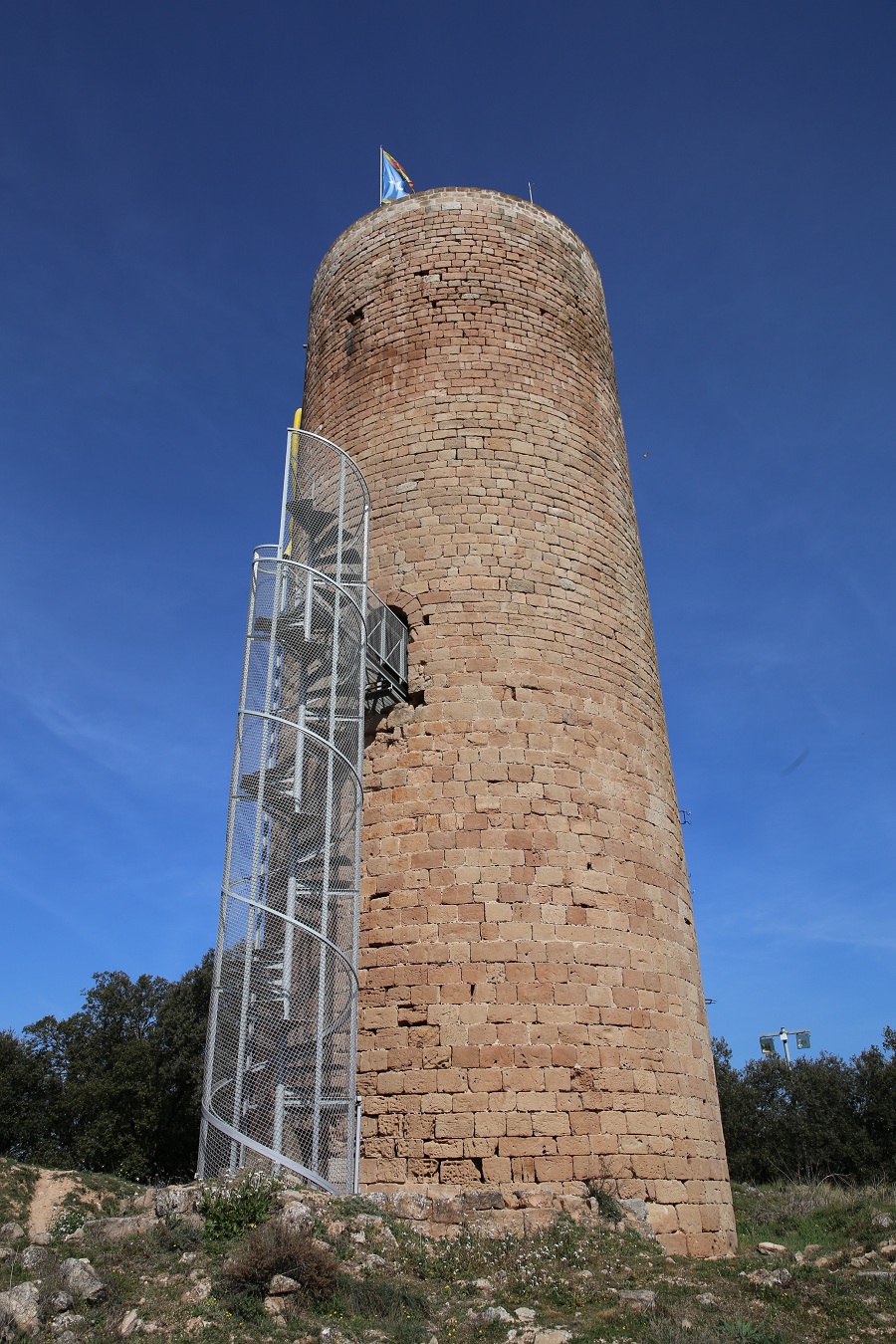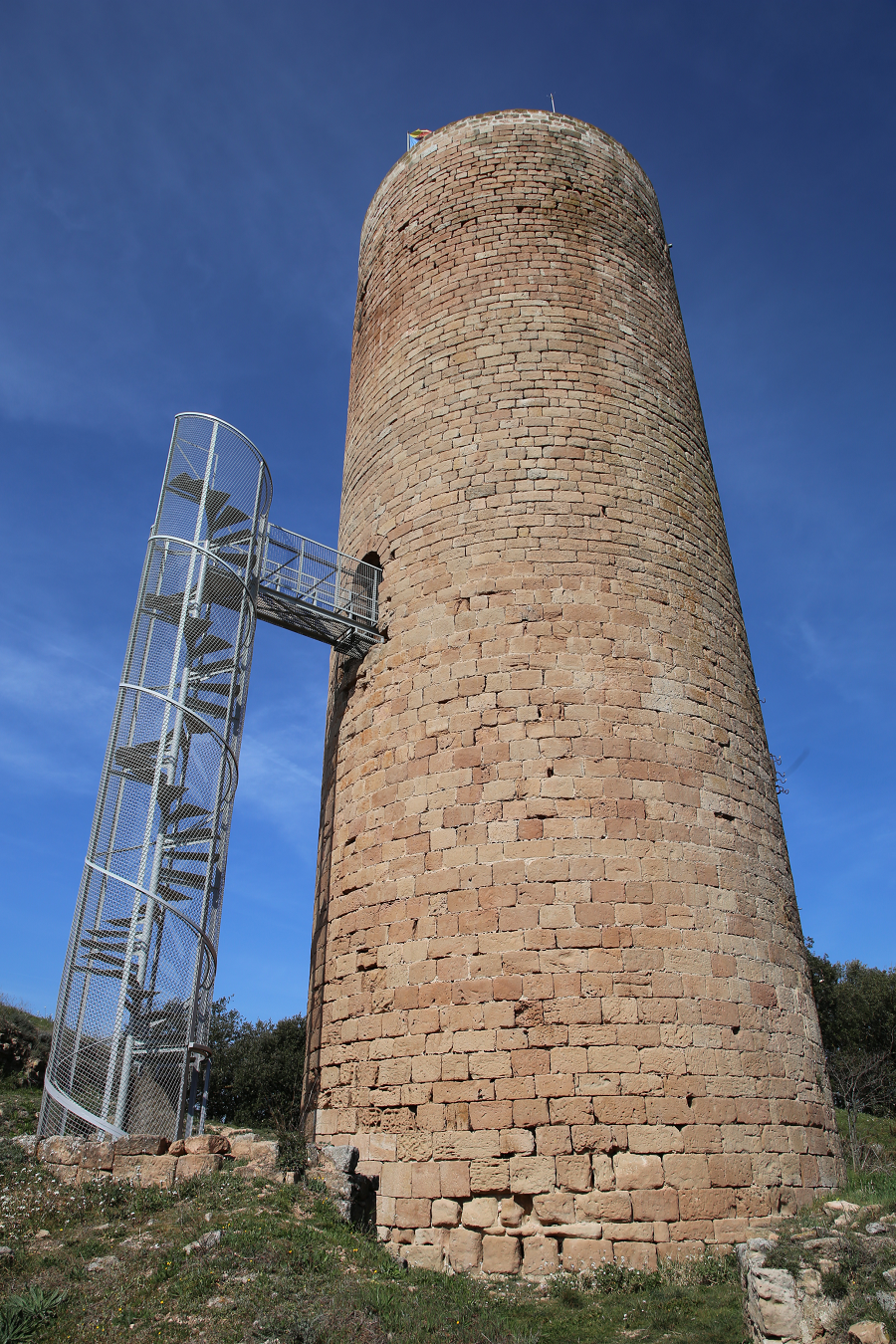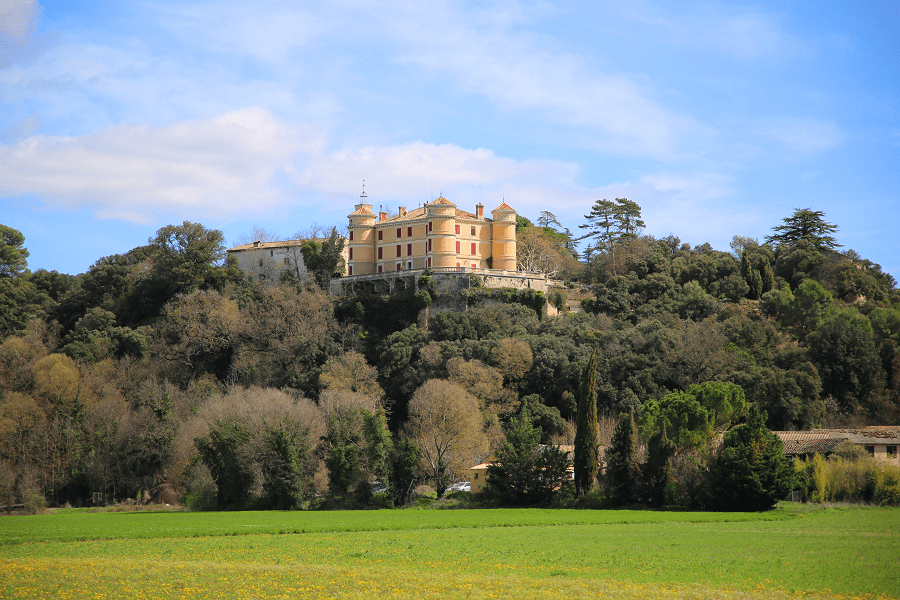Manresana tower (cat. La Torre de la Manresana) is a watchtower located in the center of Manresana, in the municipality of Prats de Rei, in the Anoia comarca (Barcelona province, Catalonia, Spain). It is a building declared a cultural asset of national interest.
It appears documented from about 1034, but the current construction dates from the 12th century, so it is assumed that it had to replace a simpler previous construction. It is 21 meters high with a terrace on top. During the War of Succession in Catalonia it was the key scene of the clashes between Austrians and Bourbons over the control of the Calaf area, and became a strategic observatory of the allied command headed by General Guido von Starhemberg.
It is a cylindrical watchtower of Romanesque origin and the only element in good condition that is preserved from the old medieval border castle. Its privileged location allowed for a visual control of a good part of the area, and it was key in the functions of surveillance of the territory. Its height and enclosure allow to enjoy a magnificent view and a spectacular panorama of the Anoia region from its top, with the bell towers of Prats de Rei, Calaf and the towers of the Castle of Boixadors standing out on the horizon. It should be noted that the entrance door is at 11 meters of the ground and accessed by an outside staircase.
History
“A platform at the top allowed smoke or fire signals to communicate to the other towers of the neighborhood of some observed danger. The system was old … The towers we refer to had a special characteristic: they were called Manresa Towers and they were all within the perimeter of that seemingly acephali county ” (Duran and Sanpere). The towers of Manresa have been located in Prats de Rei, near Sant Ramon del Portell, in Linyola and in Juneda. Close by to the tower of La Manresana is the Romanesque church of Sant Andreu and one knows that the place is very old. Both were integrated into the castle during the medieval era.
The first news of the place is from the year 945, and correspond to a nearby place: Count Soler and his wife Riquilda gave the monastery of Santa Cecília de Montserrat properties located “in campo Sagarrensis” (lat. in the Sagarrensis countryside). These goods were: the churches of “Santa Maria dels Prats”, with the altars and the old town, the meadows and twenty parellades of uncharted land. The name ‘la Manresana’ doesn’t appear until 1012, when Oliba sold to Malafred land located in the place called “Segarra”, near the Manresana Tower. In 1034 it appears organized as a castle, a testimony that has reached present day thanks to the document of a land sale of the county of Manresa in the castle of La Manresana.
Initially, the castle was in the hands of the Balsareny family who owned it in allod because they had appropriated it. The appropriation must have been made by Guifred de Balsareny, or his ancestor. This fact is confirmed in 1045 when Bernat Guifred de Balsareny states in his testament that the castle will be passed to his wife Guasca, and that she may leave it to whom she may like. Not much is known about later transitions. It is possible that it was acquired by the Count of Barcelona, directly or indirectly.
It seems that, when the territory of the Prats de Rei village was formed, the castle was integrated to it and renamed: the castle of Prats or Prats de la Manresana, as it is known by in documents from 1276. Those documents mention that the king Pere el Gran demanded the Galceran de Pinós the power over several castles, among them the one of Prats de la Manresana. In 1313, Sauria de Pinos, tutor of Pere Galceran de Pinós demanded the power over the castle from King James II. The last news of the Pinos as owners is from 1351, when Gueraua, the widow of Eiximèn de Peguera, paid homage to Galceran de Pinós for the castlania of the town of Prats and the castle of La Manresana.
Sometime later, it is unknown when, the king reclaimed the dominion of the castle, but there is no information of the later lords or vassals.
La Torre de la Manresana was the scene of a remarkable episode in the War of Succession in Catalonia: during the war of Spanish succession Commander Guido von Starhemberg directed his troops from this tower at the Battle of the Prats de Rei.
Architecture
The most remarkable part of the castle is the imposing keep tower, which has been preserved in its entirety. It is surrounded by remains, discovered not so long ago, which correspond to fragments of a wall, a set of walls of old buildings annexed to the tower, and a small building covered with a stone vault in the shape of a book.
The tower, about 21 m high, has a circular floor plan about 7 m in diameter, and was divided into three sections. The thickness of the wall at the base is about 215 cm, but it is losing width on each floor, so that it gains internal space.
The first two floors were most likely separated by wooden ceiling made of beams and panels. The third, still preserved, is covered by a stone dome on which lay a roof, protected by a sill that crowns the tower. The thickness of the first level wall is about 215 cm; the second, about 195 cm and the third level wall is 160 cm thick. The respective internal diameters are 300, 340 and 410 cm. The entrance door, finished with a semicircular arch, is on the first floor, at about 11 m from the ground. Except for the door, there is no other opening.
The dome that covers the third floor is made up of crushed stone blocks, placed in concentric rows that close the vault. On one side there is an opening that gives access to the roof. The tower construction was made with well arranged and relatively polished ashlars, positioned in horizontal lines. The construction of the other remains apart from the tower is made with solid well cut stones arranged in horizontal rows.
Based on the structure of the building and the characteristics of the construction body, the tower dates back to the end of the 11th century or early 12th century. The other remains, walls and rooms, do not differ much, chronologically, from the master tower.














